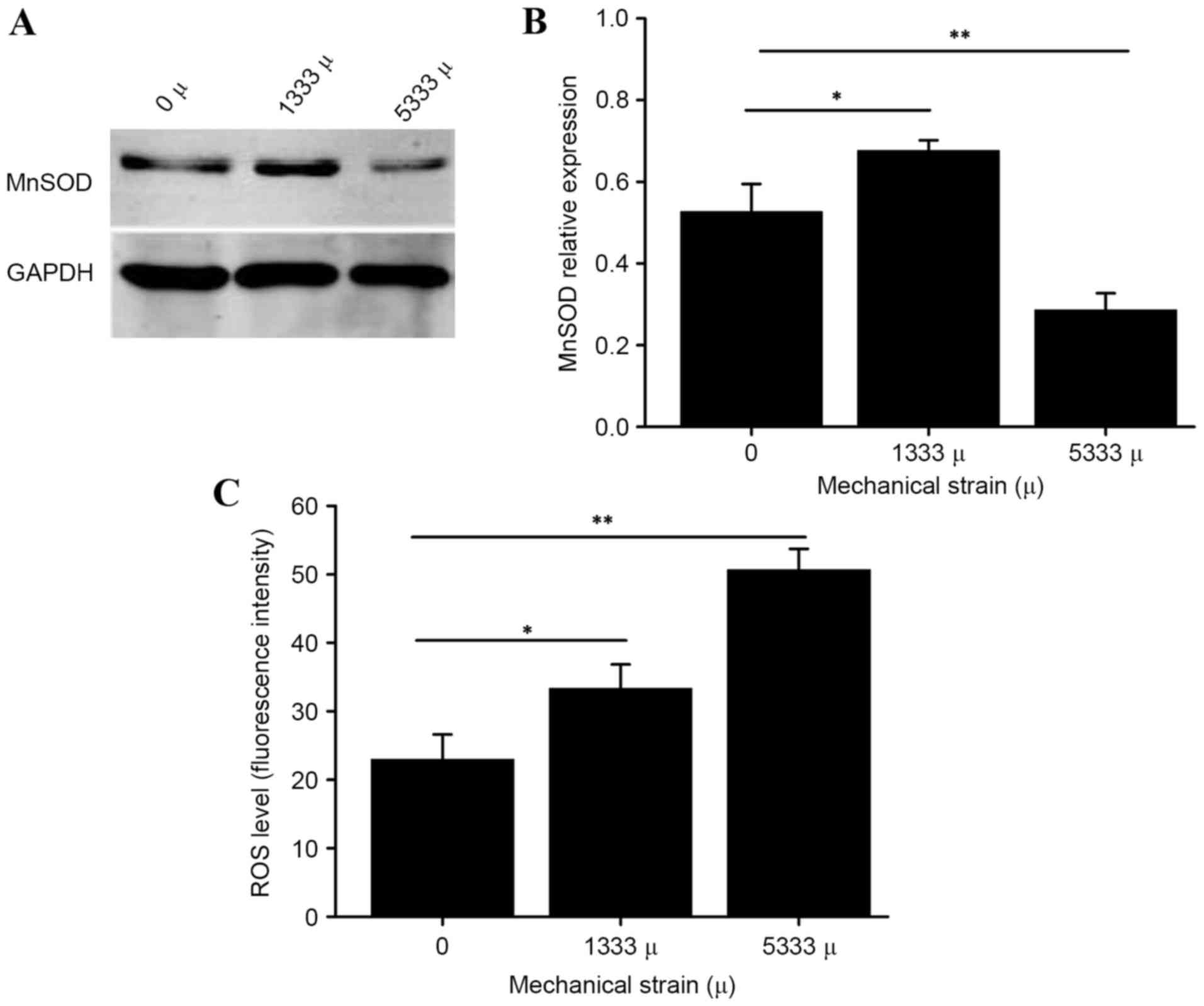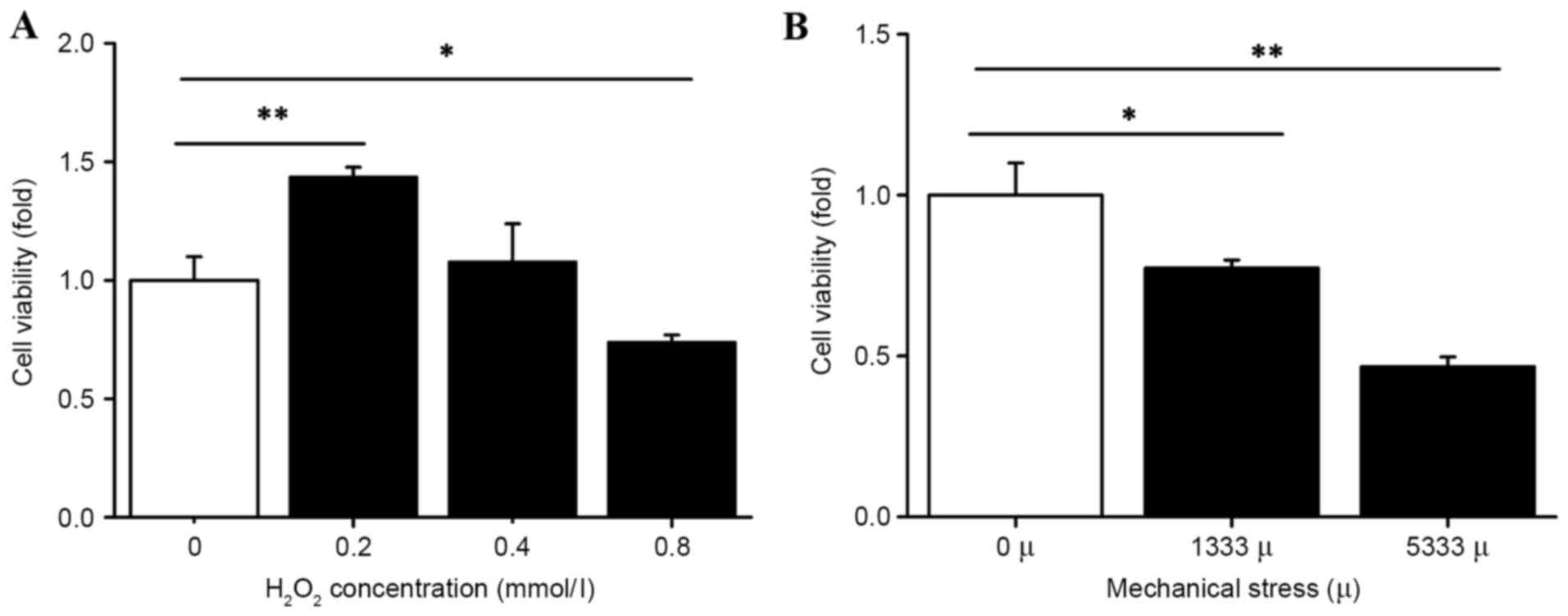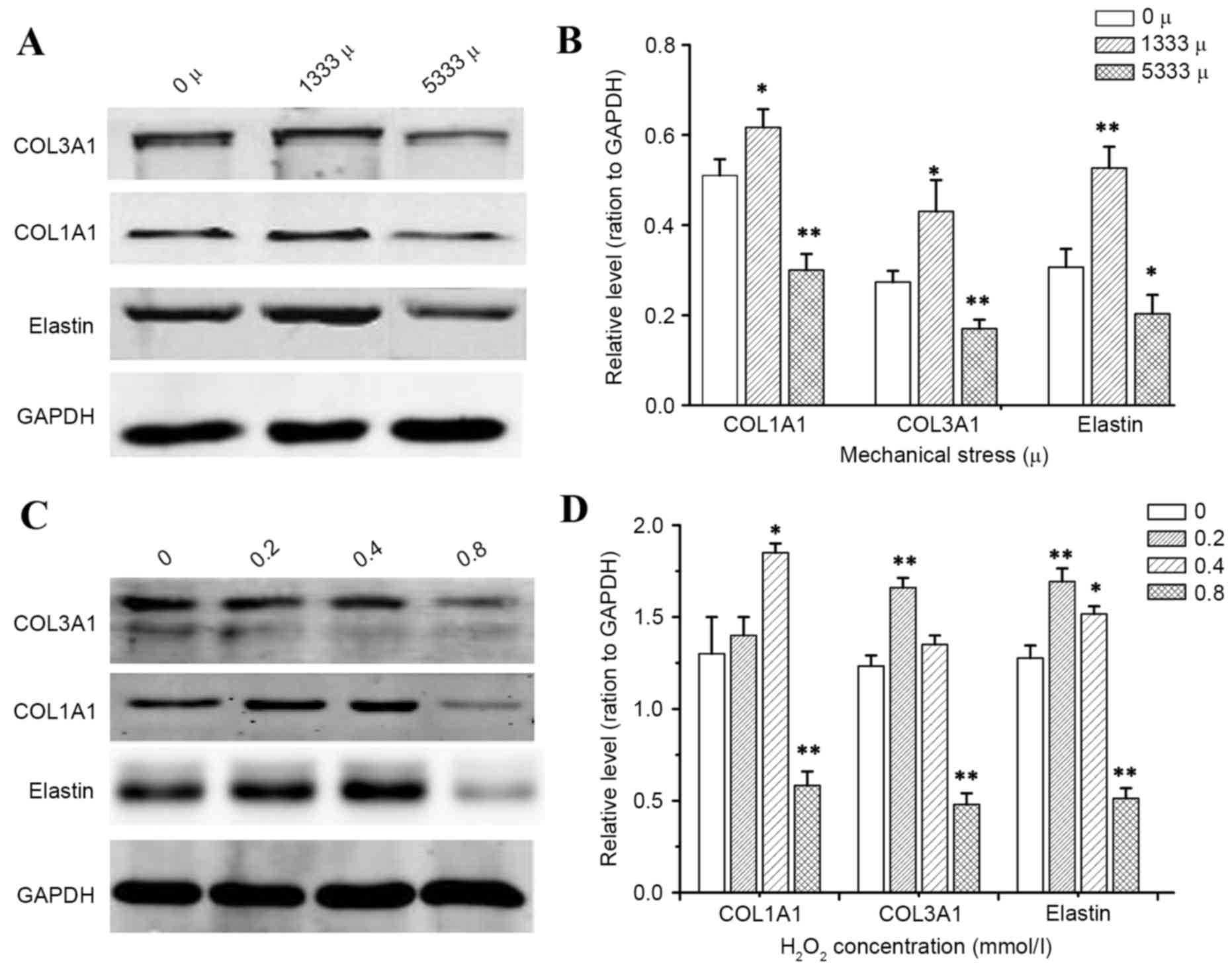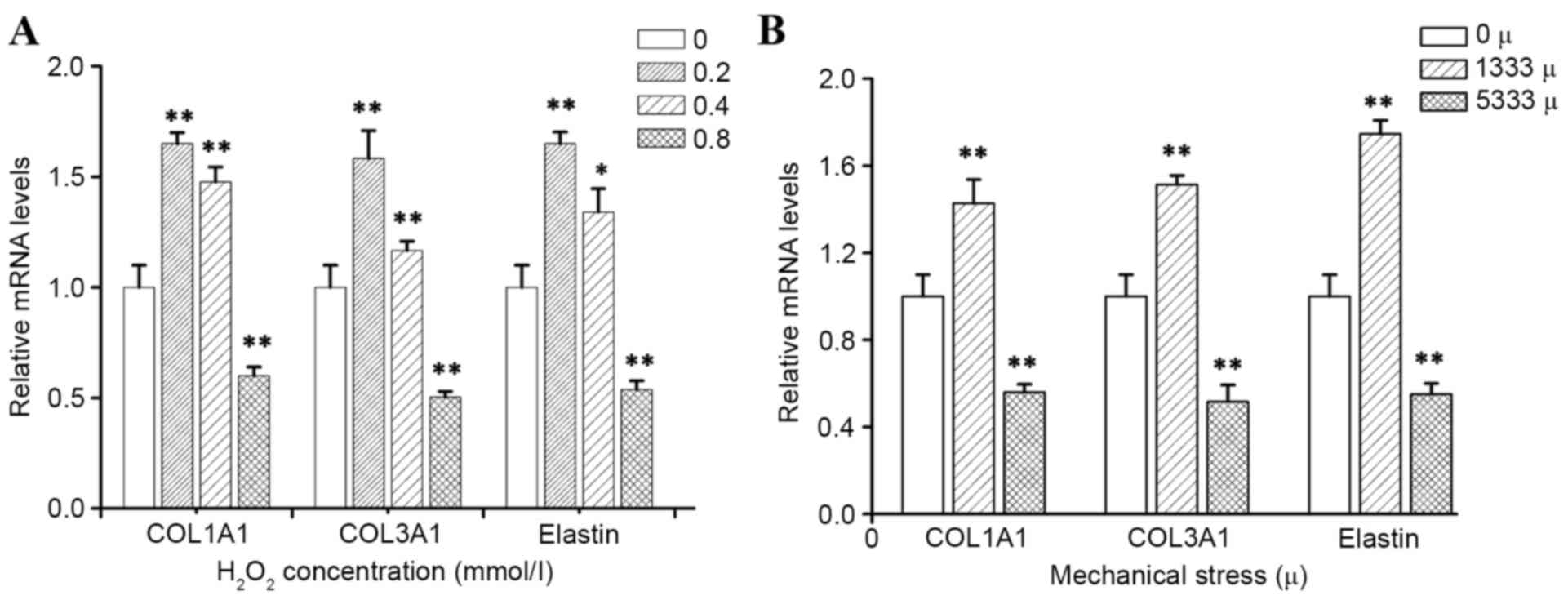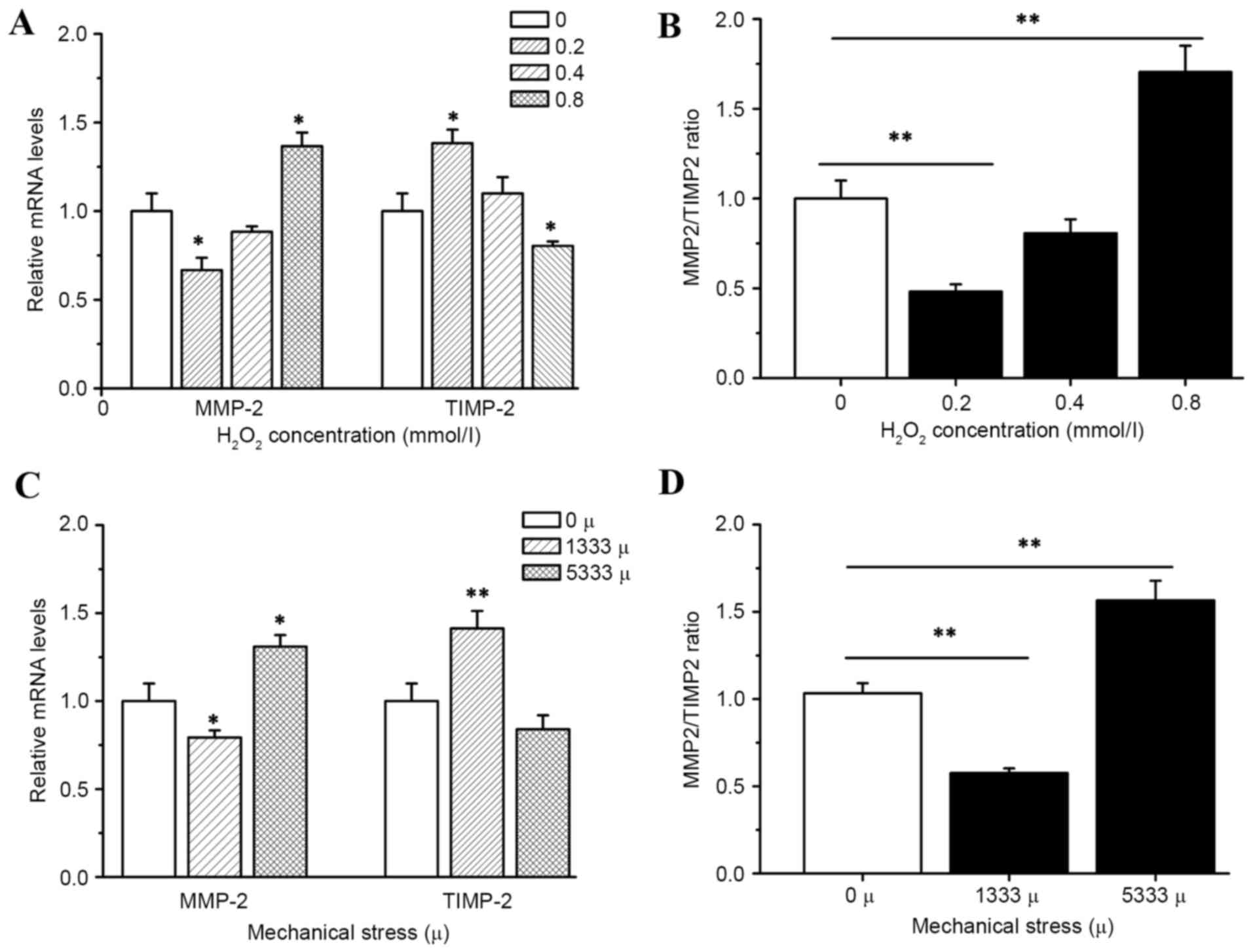|
1
|
Pereira AM, Tudor C, Kanger JS,
Subramaniam V and Martin-Blanco E: Integrin-dependent activation of
the JNK signaling pathway by mechanical stress. PLoS One.
6:e261822011. View Article : Google Scholar : PubMed/NCBI
|
|
2
|
Furumatsu T, Matsumoto E, Kanazawa T,
Fujii M, Lu Z, Kajiki R and Ozaki T: Tensile strain increases
expression of CCN2 and COL2A1 by activating TGF-β-Smad2/3 pathway
in chondrocytic cells. J Biomech. 46:1508–1515. 2013. View Article : Google Scholar : PubMed/NCBI
|
|
3
|
Dieter AA, Wilkins MF and Wu JM:
Epidemiological trends and future care needs for pelvic floor
disorders. Curr Opin Obstet Gynecol. 27:380–384. 2015. View Article : Google Scholar : PubMed/NCBI
|
|
4
|
Majkusiak W, Horosz E, Tomasik P,
Zwierzchowska A, Wielgoś M and Barcz E: Quality of life assessment
in women after cervicosacropexy with polypropylene mesh for pelvic
organ prolapse: A preliminary study. Prz Menopauzalny. 14:126–129.
2015.PubMed/NCBI
|
|
5
|
Das J, Ghosh J, Manna P and Sil PC:
Acetaminophen induced acute liver failure via oxidative stress and
JNK activation: Protective role of taurine by the suppression of
cytochrome P450 2E1. Free Radic Res. 44:340–355. 2010. View Article : Google Scholar : PubMed/NCBI
|
|
6
|
Ewies A and Elshafie M: High isoprostane
level in cardinal ligament-derived fibroblasts and urine sample of
women with uterine prolapse. BJOG. 116:126–128. 2009. View Article : Google Scholar : PubMed/NCBI
|
|
7
|
Li BS, Hong L, Min J, Wu DB, Hu M and Guo
WJ: The expression of glutathione peroxidase-1 and the anabolism of
collagen regulation pathway transforming growth
factor-beta1-connective tissue growth factor in women with uterine
prolapse and the clinic significance. Clin Exp Obstet Gynecol.
40:586–590. 2013.PubMed/NCBI
|
|
8
|
Kamodyová N, Bañasová L, Janšáková K,
Koborová I, Tóthová L, Stanko P and Celec P: Blood contamination in
Saliva: Impact on the measurement of Salivary oxidative stress
markers. Dis Markers. 2015:4792512015.PubMed/NCBI
|
|
9
|
Bujak M and Frangogiannis NG: The role of
TGF-beta signaling in myocardial infarction and cardiac remodeling.
Cardiovasc Res. 74:184–195. 2007. View Article : Google Scholar : PubMed/NCBI
|
|
10
|
Huang XR, Chung AC, Yang F, Yue W, Deng C,
Lau CP, Tse HF and Lan HY: Smad3 mediates cardiac inflammation and
fibrosis in angiotensin II-induced hypertensive cardiac remodeling.
Hypertension. 55:1165–1171. 2010. View Article : Google Scholar : PubMed/NCBI
|
|
11
|
Froese AR, Shimbori C, Bellaye PS, Inman
M, Obex S, Fatima S, Jenkins G, Gauldie J, Ask K and Kolb M:
Stretch-induced activation of transforming growth factor-β1 in
pulmonary fibrosis. Am J Respir Crit Care Med. 194:84–96. 2016.
View Article : Google Scholar : PubMed/NCBI
|
|
12
|
Wells RG: Fibrogenesis. V. TGF-beta
signaling pathways. Am J Physiol Gastrointest Liver Physiol.
279:G845–G850. 2000.PubMed/NCBI
|
|
13
|
Li FZ, Cai PC, Song LJ, Zhou LL, Zhang Q,
Rao SS, Xia Y, Xiang F, Xin JB, Greer PA, et al: Crosstalk between
calpain activation and TGF-β1 augments collagen-I synthesis in
pulmonary fibrosis. Biochim Biophys Acta. 1852:1796–1804. 2015.
View Article : Google Scholar : PubMed/NCBI
|
|
14
|
De Landsheere L, Munaut C, Nusgens B,
Maillard C, Rubod C, Nisolle M, Cosson M and Foidart JM: Histology
of the vaginal wall in women with pelvic organ prolapse: A
literature review. Int Urogynecol J. 24:2011–2020. 2013. View Article : Google Scholar : PubMed/NCBI
|
|
15
|
Chen B and Yeh J: Alterations in
connective tissue metabolism in stress incontinence and prolapse. J
Urol. 186:1768–1772. 2011. View Article : Google Scholar : PubMed/NCBI
|
|
16
|
Livak KJ and Schmittgen TD: Analysis of
relative gene expression data using real-time quantitative PCR and
the 2(−Delta Delta C (T)) Method. Methods. 25:402–408. 2001.
View Article : Google Scholar : PubMed/NCBI
|
|
17
|
Butt RP, Laurent GJ and Bishop JE:
Mechanical load and polypeptide growth factors stimulate cardiac
fibroblast activity. Ann N Y Acad Sci. 752:387–393. 1995.
View Article : Google Scholar : PubMed/NCBI
|
|
18
|
Kona S, Chellamuthu P, Xu H, Hills SR and
Nguyen KT: Effects of cyclic strain and growth factors on vascular
smooth muscle cell responses. Open Biomed Eng J. 3:28–38. 2009.
View Article : Google Scholar : PubMed/NCBI
|
|
19
|
Yang G, Crawford RC and Wang JH:
Proliferation and collagen production of human patellar tendon
fibroblasts in response to cyclic uniaxial stretching in serum-free
conditions. J Biomech. 37:1543–1550. 2004. View Article : Google Scholar : PubMed/NCBI
|
|
20
|
Kaneko D, Sasazaki Y, Kikuchi T, Ono T,
Nemoto K, Matsumoto H and Toyama Y: Temporal effects of cyclic
stretching on distribution and gene expression of integrin and
cytoskeleton by ligament fibroblasts in vitro. Connect Tissue Res.
50:263–269. 2009. View Article : Google Scholar : PubMed/NCBI
|
|
21
|
Lu M, Gong X, Lu Y, Guo J, Wang C and Pan
Y: Molecular cloning and functional characterization of a
cell-permeable superoxide dismutase targeted to lung adenocarcinoma
cells. Inhibition cell proliferation through the Akt/p27kip1
pathway. J Biol Chem. 281:13620–13627. 2006. View Article : Google Scholar : PubMed/NCBI
|
|
22
|
Niu Y, Xie T, Ge K, Lin Y and Lu S:
Effects of extracellular matrix glycosylation on proliferation and
apoptosis of human dermal fibroblasts via the receptor for advanced
glycosylated end products. Am J Dermatopathol. 30:344–351. 2008.
View Article : Google Scholar : PubMed/NCBI
|
|
23
|
Goh JT: Biomechanical and biochemical
assessments for pelvic organ prolapse. Curr Opin Obstet Gynecol.
15:391–394. 2003. View Article : Google Scholar : PubMed/NCBI
|
|
24
|
Gressner AM and Weiskirchen R: Modern
pathogenetic concepts of liver fibrosis suggest stellate cells and
TGF-beta as major players and therapeutic targets. J Cell Mol Med.
10:76–99. 2006. View Article : Google Scholar : PubMed/NCBI
|
|
25
|
Blavier L, Lazaryev A, Groffen J,
Heisterkamp N, DeClerck YA and Kaartinen V: TGF-beta3-induced
palatogenesis requires matrix metalloproteinases. Mol Biol Cell.
12:1457–1466. 2001. View Article : Google Scholar : PubMed/NCBI
|
|
26
|
Schilling TF, Nie Q and Lander AD:
Dynamics and precision in retinoic acid morphogen gradients. Curr
Opin Genet Dev. 22:562–569. 2012. View Article : Google Scholar : PubMed/NCBI
|
|
27
|
Verrecchia F, Chu ML and Mauviel A:
Identification of novel TGF-beta/Smad gene targets in dermal
fibroblasts using a combined cDNA microarray/promoter
transactivation approach. J Biol Chem. 276:17058–17062. 2001.
View Article : Google Scholar : PubMed/NCBI
|
|
28
|
Bai G, Yan G, Wang G, Wan P and Zhang R:
Anti-hepatic fibrosis effects of a novel turtle shell decoction by
inhibiting hepatic stellate cell proliferation and blocking
TGF-β1/Smad signaling pathway in rats. Oncol Rep. 36:2902–2910.
2016.PubMed/NCBI
|
|
29
|
Moustakas A and Heldin CH: Non-Smad
TGF-beta signals. J Cell Sci. 118:3573–3584. 2005. View Article : Google Scholar : PubMed/NCBI
|
|
30
|
Trager N, Smith A, Iv G Wallace, Azuma M,
Inoue J, Beeson C, Haque A and Banik NL: Effects of a novel orally
administered calpain inhibitor SNJ-1945 on immunomodulation and
neurodegeneration in a murine model of multiple sclerosis. J
Neurochem. 130:268–279. 2014. View Article : Google Scholar : PubMed/NCBI
|
|
31
|
Secker GA, Shortt AJ, Sampson E, Schwarz
QP, Schultz GS and Daniels JT: TGFbeta stimulated
re-epithelialisation is regulated by CTGF and Ras/MEK/ERK
signalling. Exp Cell Res. 314:131–142. 2008. View Article : Google Scholar : PubMed/NCBI
|
|
32
|
Xi L, Xiao C, Bandsma RH, Naples M, Adeli
K and Lewis GF: C-reactive protein impairs hepatic insulin
sensitivity and insulin signaling in rats: Role of
mitogen-activated protein kinases. Hepatology. 53:127–135. 2011.
View Article : Google Scholar : PubMed/NCBI
|















